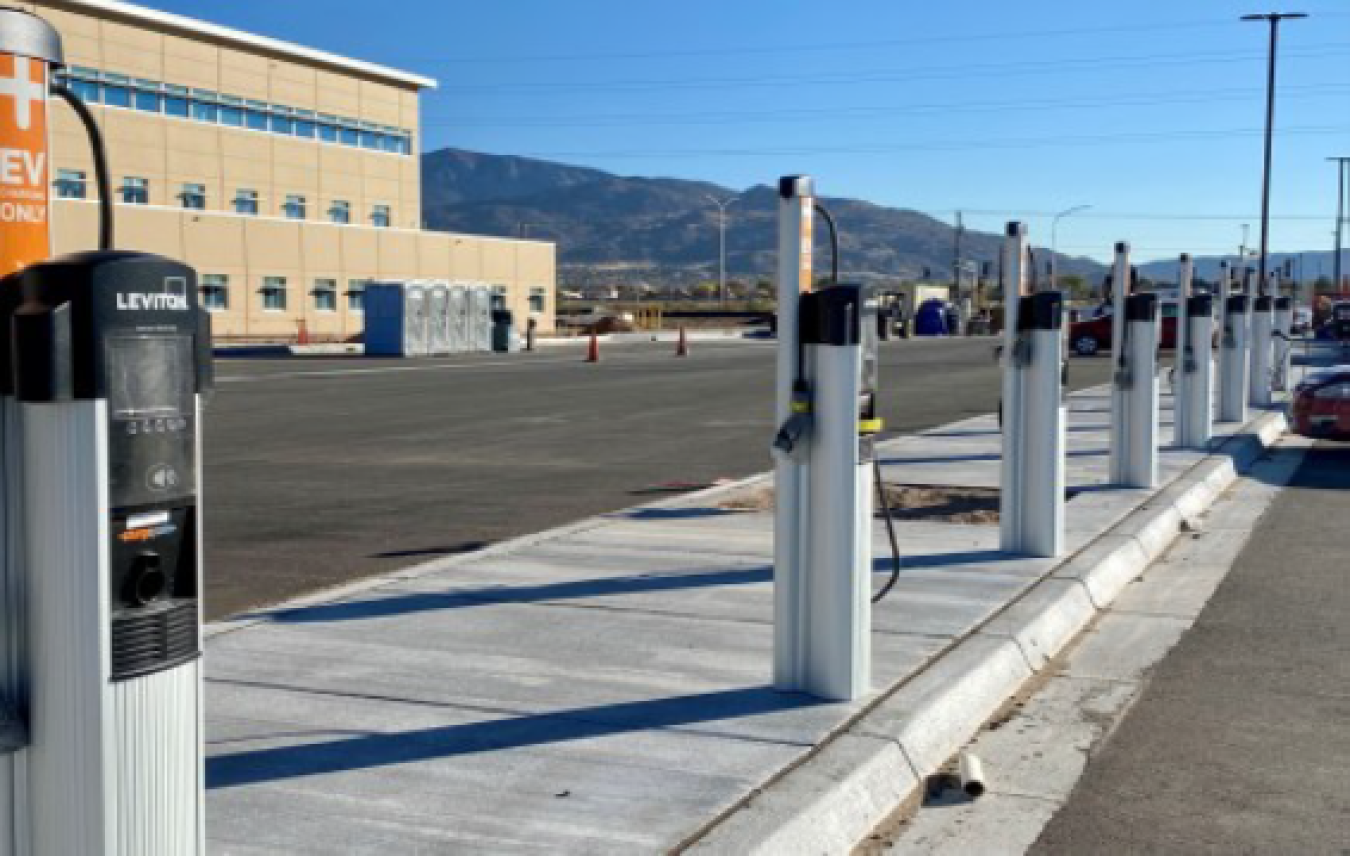The new John A. Gordon Albuquerque Complex is on track to achieve the U.S. Green Building Council’s Leadership in Energy and Environmental Design (LEED) Gold certification for new construction.
National Nuclear Security Administration
April 29, 2022
When NNSA employees at the agency’s Albuquerque, New Mexico, operations move into the new John A. Gordon Albuquerque Complex later this year, they won’t just enjoy a brand-new facility that consolidates more than two dozen facilities that date back as far as the 1950s. They’re getting the latest in green building design.
The building is on track to achieve the U.S. Green Building Council’s Leadership in Energy and Environmental Design (LEED) Gold certification for new construction.
The new complex has several sustainable highlights including:
- A 30 percent reduction in energy use compared to the building’s baseline,
- A 44 percent reduction in potable water use through dual flush water closets, low flow fixtures, and an outdoor watering subsurface cistern system;
- Renewable energy features including a 210kW photovoltaic rooftop and atrium skylight system; and
- A sustainable recycling program including reduced waste streams that will decrease landfill material by up to 50 percent and divert 77 percent of construction waste from landfills.
The sustainability features within the complex showcase NNSA’s commitment to the federal government’s green building program. The building includes several amenities to encourage alternative modes of transportation such as a new bus stop for service from Albuquerque; 16 electric vehicle charging stations; reserved parking for low emitting and fuel-efficient vehicles, carpools, and 48 bicycle lockers. The entry plaza surface is constructed with permeable pavers thus reducing alternative mitigation of stormwater. The types, spacing, and location of the outdoor lights (poles, building façade lighting) minimize light trespass beyond the property to reduce impacts to both nighttime environments and the “sky-glow” effect, which has been shown to have adverse impacts for humans, plants, and animals.
The building also includes a roof supplied rainwater catchment system to water the native plant landscaping and a stormwater management system that utilizes infiltration, reduces site runoff, and reduces total suspended solids by more than 80 percent for the average annual rainfall event. Additionally, the stormwater management design uses bio-swales and bio-retention basins for rainfall infiltration; these swales are located around parking areas and the building, while basins are located under the parking lot.
Learn more about NNSA’s Office of Safety, Infrastructure and Operations.

